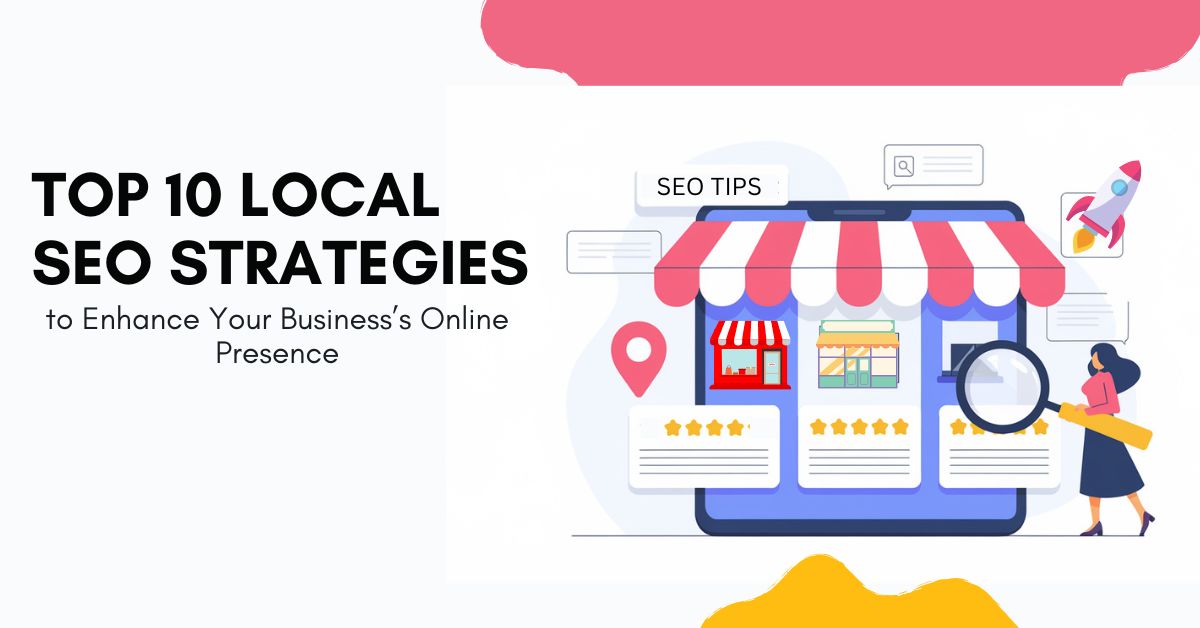Top 10 Local SEO Best Practices to Boost Your Business Visibility
In the digital age, local SEO is a critical component for small to medium-sized businesses (SMBs) looking to improve their online presence. As more consumers turn to the internet to find local products and services, it is essential to adapt to local SEO best practices. By doing so, businesses can effectively enhance their rankings in local searches and increase their visibility to nearby customers. This guide will explore the best practices and provide actionable insights that can help solidify your business’s position in the local market.
What is Local SEO?
Local SEO is a strategic approach to search engine optimization (SEO) that focuses on optimizing a business’s online presence to attract more customers from relevant local searches. These searches typically occur on search engines like Google and Bing, where users include location-based keywords, such as “near me” or the name of a city or town. Understanding local SEO is crucial for local businesses because it’s about making it easier for potential customers in your geographic area to find your business online.
Different from general SEO, local SEO specifically targets searchers in a specific geographic area. While general SEO focuses on improving website visibility on a national or global scale, local SEO aims to improve a business’s visibility in localized markets. For instance, a bakery in Denver wants to be visible to people searching for “best bakery in Denver,” rather than appearing globally.
- A case study of a successful restaurant chain that utilized local SEO to enhance their diner count serves as an excellent example. By optimizing their Google My Business listing and encouraging customer reviews, they witnessed a 40% increase in local search-driven customers.
Key Elements of Local SEO
Understanding the elements that make up local SEO is fundamental to optimizing your business properly. Below we outline key components essential for a robust local SEO strategy.
Google My Business Optimization
Claiming and optimizing your Google My Business (GMB) profile is the cornerstone of local SEO. It allows you to manage how your business information appears across Google, including in search results and on Google Maps. Ensure your business details are accurate, add high-quality images, and encourage satisfied customers to leave reviews.
Local Keywords Targeting
Incorporate location-based keywords throughout your website. These should include city names, neighborhoods, or regions. For example, using phrases like “Italian restaurant in Downtown San Francisco” can make your website more appealing to search engines looking to provide relevant local results.
Local Citations and Directory Listings
Local citations are online mentions of your business’s name, address, and phone number (NAP). They occur on websites, apps, social platforms, and directories. Increase your business credibility by ensuring that your information is consistent across all platforms.
Online Reviews and Ratings
Encouraging customers to leave positive reviews can boost your local search ranking. Reviews not only influence consumer decisions but also show search engines that your business is reputable and trustworthy.
Mobile Optimization
With a growing number of local searches occurring on mobile devices, ensuring that your website is mobile-friendly is more important than ever. A fast-loading, responsive website ensures a great user experience, crucial for converting local search queries into actual visits or sales.
Local Link Building
Building relationships with local bloggers, newspapers, and businesses can lead to valuable local backlinks. These links improve your authority in the local area and can significantly boost your local SEO efforts.
How to Implement Local SEO Best Practices
Implementing local SEO best practices involves strategic planning. Here is a step-by-step guide to help you begin this crucial process:
-
Conduct Local Keyword Research
Research and identify the keywords and phrases potential customers use when searching for your products or services in your area. Tools like Google’s Keyword Planner can be instrumental in the process.
-
Optimize Google My Business Profile
Your GMB profile should be accurate and complete with information about your business. Include business hours, address, phone number, and a link to your website.
-
Ensure NAP Consistency
Make sure your business’s name, address, and phone number are consistently listed across all online directories and platforms.
-
Encourage Customer Reviews
Regularly request reviews from satisfied customers. Reviews play a massive role in how a business is perceived online and can improve your local search ranking.
-
Focus on Local Content Creation
Building content tailored to local interests can engage your community and attract local customers. This can include blog posts about local events, customer stories, or local tips and guides.
Common Mistakes in Local SEO
Even with the best intentions, businesses can falter in their local SEO efforts. Here are some common mistakes and advice on how to avoid them:
Ignoring Mobile Users: Neglecting mobile optimization is one of the biggest mistakes. Ensure your website is mobile-friendly to capture and convert mobile searchers effectively.
Inconsistent NAP Details: Ensure NAP information is consistent across all platforms. Inconsistent details can confuse customers and mislead search engines, leading to lower local rankings.
Overlooking Online Reviews: Not engaging with or encouraging reviews is a missed opportunity. Regularly monitor customer reviews and respond to them, whether they are positive or negative.
Local SEO Tools You Need
Optimizing for local SEO can be challenging, but numerous tools can assist in streamlining the process:
Google My Business: Essential for managing how your business appears on Google Search and Maps.
Moz Local: Helps ensure your business listings are accurate and consistent across the web.
BrightLocal: Offers comprehensive tools and reporting for managing local SEO, citations, and reviews.
Conclusion
Local SEO is not a one-time effort but rather an ongoing process that can greatly benefit small to mid-sized businesses. By understanding and implementing local SEO best practices, you can improve your rankings in local searches and significantly boost your local business visibility. Remember that consistency, engagement, and continual optimization are key to success in local SEO. Start implementing these practices today and reap the benefits of increased local engagement and visibility.
Get Started with Professional SEO Services!
If you’re looking to excel in local SEO but don’t have the time or expertise, consider contacting professional SEO services. They can help you navigate the complexities of local optimization, maintain up-to-date best practices, and propel your business to new heights in the local online landscape.







